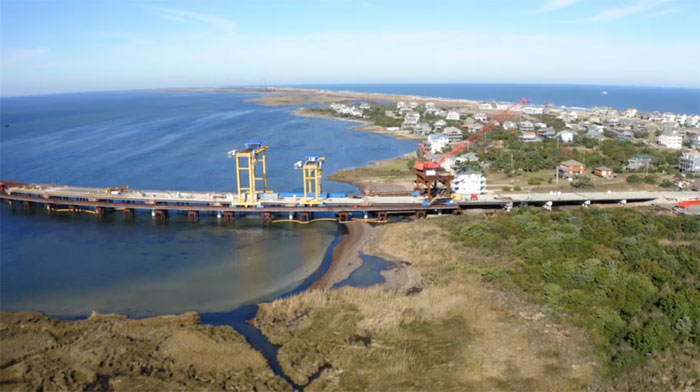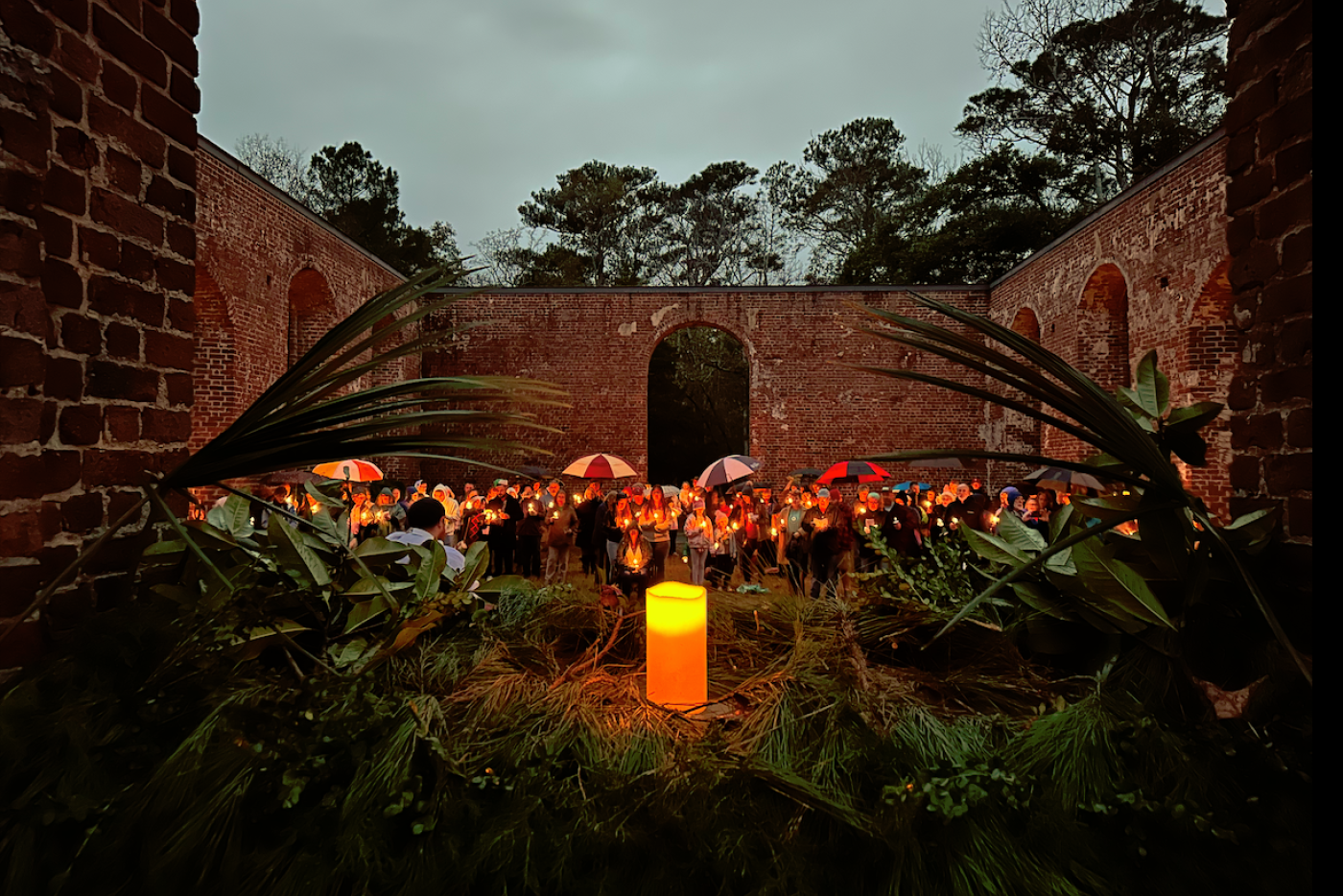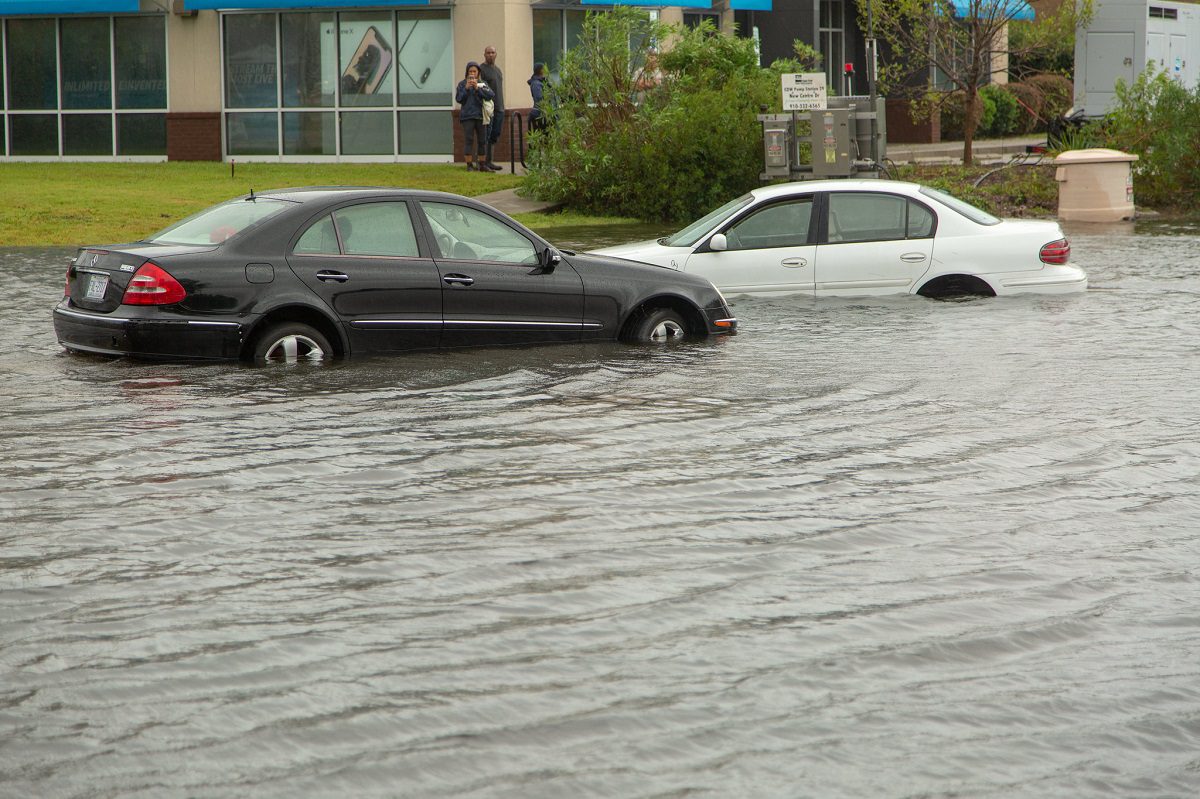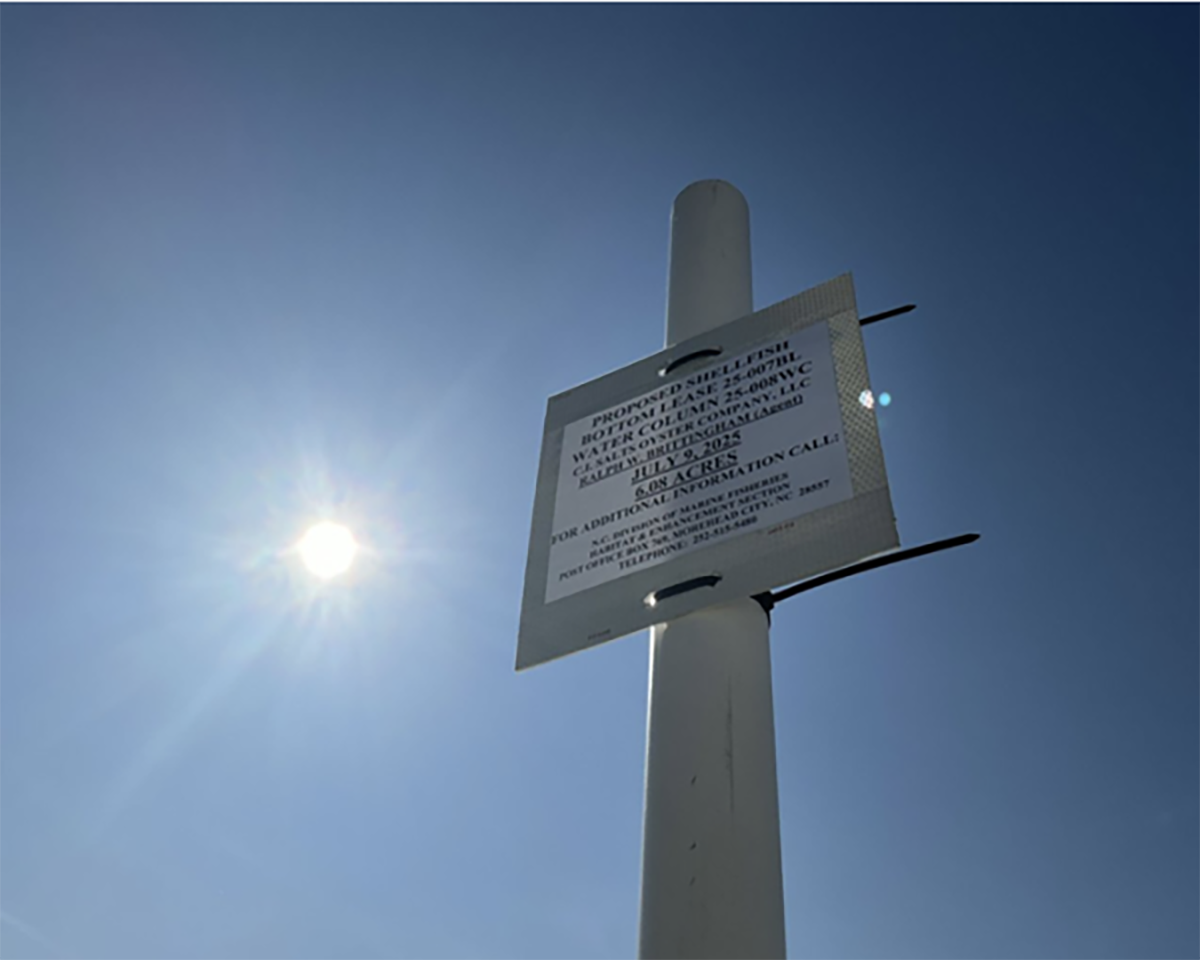
Reprinted from Island Free Press
North Carolina Department of Transportation representatives announced Thursday during an evening informational meeting in Rodanthe that the “jug handle” bridge was roughly 28% complete as of early March, and that the targeted date of completion had been pushed back to fall 2021.
Supporter Spotlight
The jug handle bridge will stretch from the southern portion of the Pea Island National Wildlife Refuge to northern Rodanthe, and will bypass the S-turns section of N.C. 12, which is highly susceptible to breaches and ocean overwash during storms.
NCDOT’s resident engineer for the project, Pablo Hernandez, stated that due to weather-related complications, progress on the jug handle bridge had been slow since the last quarterly update meeting held on Dec. 5.
In December, the bridge was 24% complete, so the 28% completion in early March marked a slight increase in overall progress.
“Even though it’s been a mild temperature winter, it has not been a very kind winter in terms of wind, rain and more wind,” said Hernandez at the meeting.
Of the 108 total bents, or the piers or groups of pilings that will support each individual span of the bridge, 33 have been installed, so far. That equates to 121 pilings out of a total 348 pilings for the project. Eighteen of the 107 bridge spans that serve as the roadway had been completed.
Supporter Spotlight
“I would like those numbers to be a little bit higher, given where we are with the project, but with the weather, (we’ve had complications),” said Hernandez. “Just like today…. It may have been 15-20 mph on the ground, but they were getting 35 mph on top of the frame, so it was an all-stop condition.”
“Anything above that 30 mph range, you’re really going to see things start to slow down,” said Hernandez when asked about the wind threshold for the project from a meeting attendee. “Everything is weather and material-delivery dependent.”
Hernandez also noted that limited progress had been made on the earthwork and additional paving that was planned during the winter months, and that weather had also played a role in the slow progress.
He said that the contractor for the paving portion of the project, RPC Contracting, was expecting to work at the jug handle bridge in the winter months, when colder temperatures would prevent them from tackling other projects in North Carolina.
“There are a lot of resurfacing projects going around the entire state of North Carolina. Here In eastern North Carolina, typically, they can pave until about the middle of December and sometimes the first part of January,” said Hernandez. “Typically, we start shutting those (inland) paving contracts down because we don’t want them to pave when it’s below 35 degrees. Well, think of how many times we’ve been between 45 and 70 degrees since Thanksgiving. And in those times that we have been below 45 degrees, it has only been for a short period of time.”
Due to the warm weather throughout the state, the contractor had been focused on other projects, including one in South Nags Head, and the recent repaving of the canal zone south of Oregon Inlet.
“I’m really happy for our counterparts who are getting their projects done, but I’d really like (the contractor) to come in and finish some things for us,” said Hernandez.
Right now, the paving portion of the jug handle bridge project is expected to begin again in earnest sometime in April or May. Lane closures and work zones are expected during this time frame, however, daytime lane closures are prohibited from June 15 until Sept. 15 on Hatteras Island to accommodate summertime traffic.
The 2.4-mile-long jug handle bridge, along with the Capt. Richard Etheridge Bridge on Pea Island that was completed in spring 2018 and the Bonner Bridge replacement completed in spring 2019, is considered part of Phase II of the Bonner Bridge Replacement Project, and is the final bridge of the three new bridges on Hatteras Island to be built.
After the bridge is constructed, the existing N.C. 12 at the southern end of the refuge will be removed, and the land will be returned to its natural state.
This story is provided courtesy of the Island Free Press, a digital newspaper covering Hatteras and Ocracoke islands. Coastal Review Online is partnering with the Free Press to provide readers with more environmental and lifestyle stories of interest along our coast.








